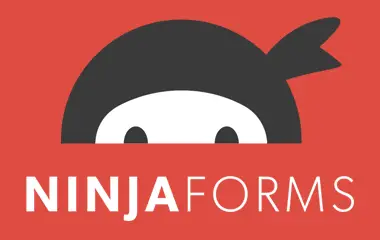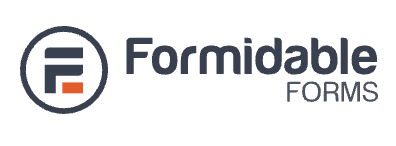Contact Form 7 is a free WordPress plugin that creates forms that can be dropped into your posts and pages via a shortcode. The plugin only handles building and displaying the forms (although it does this very well). If you want to store information that users have filled out in the forms you create, you have to install a second plugin Flamingo.
What is the Flamingo plugin?
The Flamingo plugin is a message storage plugin that stores data submitted when users fill out forms created by Contact Form 7 or comments on your site. Flamingo was written by the author of the Contact Form 7 plugin, so the integration between the two plugins works seamlessly.
In the WordPress dashboard, Flamingo has two submenu items. The first is an Address Book which shows a table containing email addresses, names, tags and the history of that user’s contract with your site. The second is the Inbound Messages section which shows all the data from forms filled out on your site. You can sort this by email address or date to help you find messages in your system.
Contact Form 7 integration with other service providers
One of the dashboard screens for Contact Form 7 is the integration screen. This screen directs WordPress admins to set up integration with external APIs. These range from handling email, spam filtering and payment processing. For example, there are setup instructions on integrating the plugin with Sendinblue, a CRM and email marketing platform.
Now you know the basics of how Contact Form 7 works, let’s look at some competitors to see what other options we have when creating forms in WordPress
Who are the competitors?
A quick google of contact forms in WordPress brings up an exhaustive list of options. For this purpose, I will review the top 3 according to my google search results.
The first result (after all the google ads) is WPForms.
1. The WPForms Plugin

WPForms is a drag & drop WordPress form builder. According to the list of features on the home page, WPForms have a very similar feature set to Contact Form 7 regarding building templates, spam protection, email marketing integration and the ability to embed forms into your site. Where there does seem to be a difference is in the graphical nature of the app. For instance, the WPForms plugin is touted as having a drag-and-drop builder, which Contact From 7 does not.
The other big difference is in the number of pre-built add-ons WPForms has. From payment options, including PayPal, offline forms that can store user data until their internet connections are restored and more CRM add-ons.
All these features come at a price, though. WPForms has four tiers of pricing available to users, and each tier comes with a different number of included features. The basic plan doesn’t include the payment processing options like PayPal or Stripe. For those, you’ll need to go for the second-highest plan. The second plan includes email functionality with add-ons for MailChimp and SendInBlue forms.
The highest cost plan includes add-ons for Salesforce and Webhooks, which makes sense in that this plan would probably only be required by larger companies.
2. Ninja Forms
 Ninja Forms is another drag-and-drop form builder. The selling points for Ninja Forms are that it is beginner friendly, accepts payments and donations and can handle conditional logic without needing a developer to set up your forms.
Ninja Forms is another drag-and-drop form builder. The selling points for Ninja Forms are that it is beginner friendly, accepts payments and donations and can handle conditional logic without needing a developer to set up your forms.
In a feature comparison, Ninja Forms closely mimic the feature set of WPForms, including the pricing tiers, with a couple of notable exceptions. For example, the second tier pricing includes email marketing add-ons, but unlike WPForms, the second tier has PayPal processing and Slack and Trello support.
The third-tier pricing includes more email marketing add-ons and Stripe processing. The fourth tier is just an unlimited use of all features from the third tier. This means there is no Salesforce integration, but WebHook integration is included in the third tier.
All in all, Ninja Forms seem close in features to WPForms, but not all the way there for similar pricing.
3. Formidable Forms

This is another drag-and-drop form builder, and looking at the feature set, the number of API integrations and add-ons is impressive. The basic plan is cheaper than WPForms and Ninja forms and, like the two previous form builders, doesn’t include email integrations with MailChimp. For MailChimp integration, you need to go for the Plus plan. The Plus plan will also give you landing pages, bootstrap form styling and table views.
The Business plan is the first plan that allows payment processing through Stripe and PayPal. It also has typical business features such as exporting to PDF, Google Sheet integration and more general data processing options.
The Elite plan is what you would look at if you were an online store. It comes with WooCommerce, Salesforce add-ons, action automation, and white-label form building.
Each plan level comes with more form templates than the last. These templates most likely relate to the additional features of each plan. For example, a PayPal-based template wouldn’t be required for the Basic plan as it doesn’t have PayPal integration.
Formidable forms offer a closer number of features to WPForms, and the pricing structure is very similar once you go above the basic plan. It is a good option for any online business and would come down to personal preference and ease of use of the application when deciding which form builder you would choose.
Conclusion
Looking at the available options for forms in WordPress, there are several viable options depending on your budget. Contact Form 7 would be enough for most sites to get you the basic ability to let your site visitors send you information and parse that information. The only caveat is that the Contact Form 7 plugin (along with the Flamingo plugin) is probably tougher for a non-developer to work with. For an easier but more costly option, I would recommend WPForms based on its ease of use and its ability to do every form-based task you could think of.

